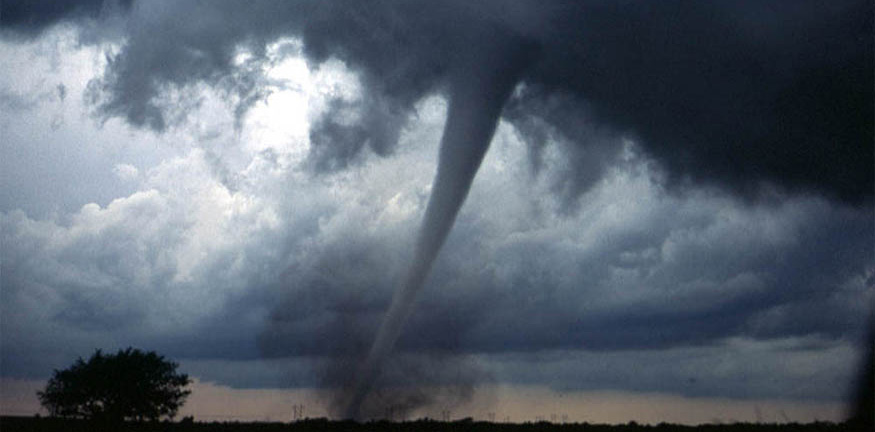Rotational motion and angular momentum
66 Introduction to Rotational Motion and Angular Momentum

Why do tornadoes spin so rapidly? The answer lies in the angular momentum of rotating air masses. As the radius of a rotating air mass decreases—such as when a large storm system funnels into a narrow column—the rate of rotation increases dramatically to conserve angular momentum. This same principle explains the acceleration of a figure skater who spins faster by pulling in their arms and legs, as shown in Figure 66.2.
Just like translational motion involves quantities such as force, energy, and power, rotational motion also involves their rotational counterparts. In this chapter, we will examine the core principles of rotational motion. Many concepts you have already encountered—such as acceleration, momentum, and kinetic energy—have rotational analogs. We will begin with a close look at angular acceleration, the rotational counterpart of linear acceleration.
Why do tornadoes spin at all? And why do tornados spin so rapidly? The answer is that air masses that produce tornadoes are themselves rotating, and when the radii of the air masses decrease, their rate of rotation increases. An ice skater increases her spin in an exactly analogous manner as seen in Figure 66.2. The skater starts her rotation with outstretched limbs and increases her spin by pulling them in toward her body. The same physics describes the exhilarating spin of a skater and the wrenching force of a tornado.
Clearly, force, energy, and power are associated with rotational motion. These and other aspects of rotational motion are covered in this chapter. We shall see that all important aspects of rotational motion either have already been defined for linear motion or have exact analogs in linear motion. First, we look at angular acceleration—the rotational analog of linear acceleration.


